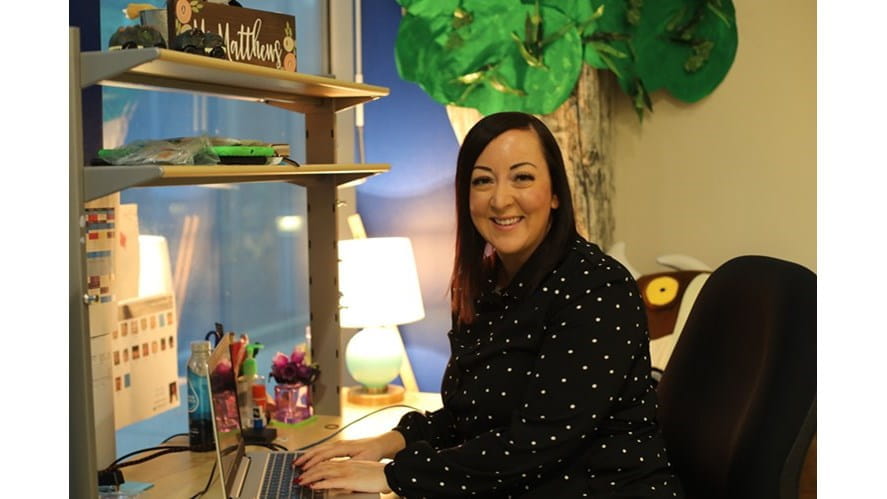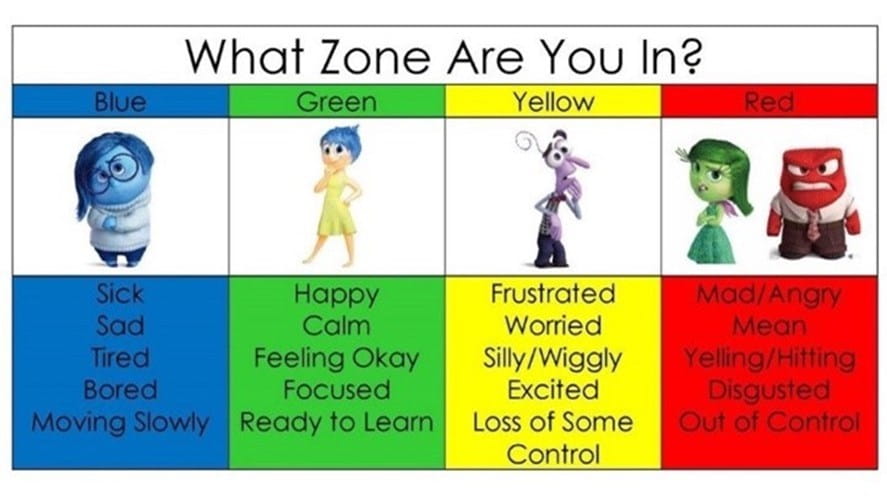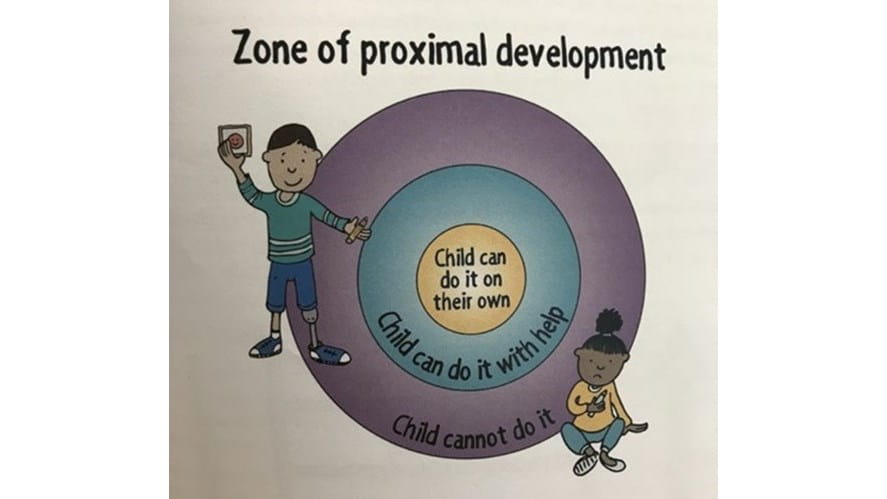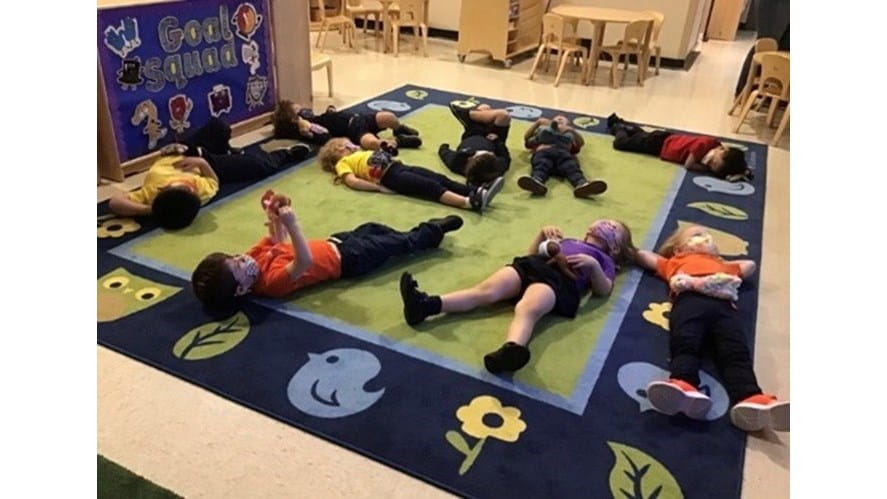We use cookies to improve your online experiences. To learn more and choose your cookies options, please refer to our cookie policy.

Have you ever observed your child experience BIG feelings and wondered how to support them with regulating? Can you reflect on a time when you, yourself have felt overwhelmed and experienced such BIG feelings? Then can you remember the steps you took in order to regulate your own body and return to a state of calm? As adults and as a society, we have started to embed a culture of mindfulness into our lives. We attend Yoga and fitness classes, we listen to music, we listen to podcasts, we light some candles and curl up with a good book in order to relax and unwind at the end of a long day. But for children, regulation strategies are not always obvious and the physical reactions their bodies make in relation to BIG feelings can be very difficult to manage on their own.
As a school, we have embedded ‘The Zones of Regulation’ into our classrooms. These four zones provide children with the vocabulary to recognize and communicate certain emotional states, as demonstrated in the image below.

In addition to this, the British Early Years Curriculum (EYFS) has, for many years, provided a framework for practitioners to guide, teach and assess children through the early stages of life. This year however, the curriculum was revised and a new strand, named ‘Self-Regulation’ was added to Personal, Social and Emotional Development. This subtle yet fundamental shift has shone a spotlight on the demand for self-regulation skills to be taught from a young age and for strategies to be implemented in classrooms and mirrored in the home. As early years practitioners, we are now required to teach, observe and assess a young child’s ability to self-regulate.
But how do you teach young children to regulate their own bodies? How can we guide them back to the “green zone” when they are feeling “yellow?” The answer, as with most early years practice, comes down to two things – communication and scaffolding.
Self-Regulation and Communication:
Children are not born with self-regulation skills. They develop them as they experience warm, nurturing and loving relationships with important adults and others. Clear, sensible and consistent behavioral boundaries are also important.
As parents and educators, we are familiar with the concept of breaking a task down into smaller components and communicating expectations clearly. Communicating regulation strategies works in the same way. As adults, we need to break down the components of regulating and communicate each component clearly, so children can absorb and apply specific skills. Referring to the Zones of Regulation, helps children identify and communicate a certain feeling they may be experiencing. Communicating clearly and breaking down a task into bitesize chunks helps children to learn cognitive and behavioral self-regulation. In other words – breaking a task down allows children to focus on specific aspects at a time and plan a sequence of behaviors. An example of this might be a tricky cutting activity. A child can become very frustrated if they are not able to cut something out as well as they wanted to. They may feel angry and tell an adult they are “in the red zone”. It is important for them to understand that it is ok to feel angry and provide them with the tools to plan a sequence of behaviors to achieve that end goal, but this is the difficult part. After identifying their emotion, children may then require support to adapt their physical response and regulate their bodies in order to return to the task in hand.
Self-Regulation and Scaffolding:
One of the most powerful ways to help children’s learning is ‘scaffolding’. The idea behind scaffolding is that the child has two levels of development:
What they can do on their own
What they can do with the help of another person.
This approach draws on the work of the great Russian theorist Lev Vygotsky. He argued that teaching should always be aimed at the child’s emerging skills, not at the existing ones (Vygotsky, 1978).
Vygotsky called the space where the child’s skills are emerging the ‘Zone of Proximal Development’

When young children are learning to tackle new problems, scaffolding has been proven to be an incredibly effective approach. It means giving children just enough help to do something which they could not do alone. Overtime, the help is gradually reduced until children can solve the problem themselves. Going back to that cutting activity this could mean an adult holding and turning the paper, while the child snips. Eventually, the adult may let go of the paper but verbally guide the child.
With all of that that in mind, how can we (as parents and practitioners) use scaffolding to teach self-regulation skills?
First, we must communicate clearly with children. Teach them to recognize their emotional state, as well as recognize different parts of their body and in doing so, teach them to recognize the physical reactions to big feelings. As adults, we can guide them through a range of strategies, which (eventually) they can refer to independently in order to self-regulate.
A favorite of mine is a technique called ‘Belly Buddies’ which involves the children laying on their back, with a cuddly toy on their tummy. With calming music playing, we encourage the children to “smell the flowers and blow out the candles.” This simple instruction will prompt children to breathe in through their nose (causing their belly buddy to rise) and out through their mouth, causing their belly buddy to fall. After doing this a few times, the adult can draw attention to their belly buddy, instructing them to watch it rise and fall as they breathe. This allows the children to focus on their breathing and develop an awareness of their tummies (lungs) inflating and the calming feeling that follows when they simply breathe. This strategy can be taught when the children are already in a state of calm and then referred to when regulating is required – perhaps if they are over excited or overwhelmed. It has quickly become a class favorite in my current Nursery class and following repetition and scaffolding, some children have started to choose it as an independent activity, which is scaffolding taking effect. They may even rely on just one aspect of this technique and apply the breathing element when they feel overwhelmed.

As well as teaching children specific strategies and drawing their attention to their physical responses, it is important for adults to provide opportunities for play. Evidence suggests that pretend play is one of the powerful contexts for children to develop self-regulation. In pretend play, children have to follow the ‘rules’ of play and restrain their impulses for a time. They could be pretending to be a dog, a Vet, a Chef or a Parent. Whatever the role, the child will act or pretend accordingly. The role play areas in our classrooms play a fundamental part in self-regulation. These staged, yet language rich corners of the room provide endless opportunities for children to practice and verbally articulate their developing regulation skills and hovering somewhere nearby, you will likely find an early years practitioner filming, observing, assessing and scaffolding this vital stage in a child’s development.
Ali Matthews, Nursery Leader